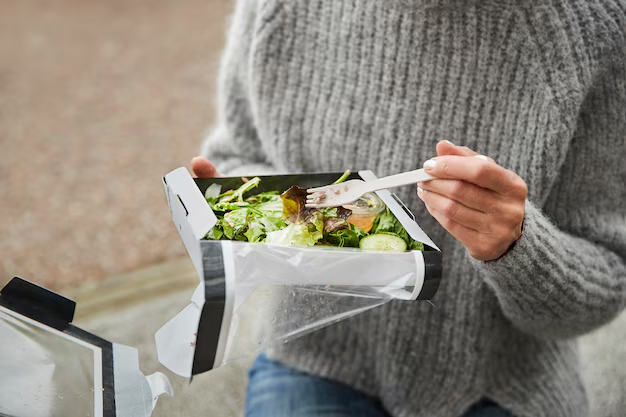Discovering the Possibility: Can You Use EBT on Uber Eats?
In today's fast-paced world, convenience often takes the front seat. Whether you're a busy parent, a student cramming for exams, or someone simply yearning for a slice of variety, food delivery services have become an indispensable part of life. Among these, Uber Eats stands out as one of the most popular choices. However, an important question arises: Can you use EBT on Uber Eats?
Understanding EBT: A Quick Overview
Electronic Benefit Transfer (EBT) is a government-issued card for SNAP (Supplemental Nutrition Assistance Program) benefits, previously known as food stamps. It allows eligible individuals to purchase food items from authorized retailers, helping to support families with low income.
EBT is limited to buying essential food items and is not applicable for non-food items, alcohol, or restaurant meals. But with the rise of food delivery apps, many wonder if they can use EBT as a payment method.
How EBT Works
- Eligibility: To utilize EBT, one must qualify for SNAP benefits. Eligibility generally depends on your income level, household size, and specific state guidelines.
- Accepted Items: EBT can be used to buy fruits, vegetables, meat, dairy, and other grocery staples. It cannot purchase hot foods or food prepared for immediate consumption.
- Authorized Retailers: Only retailers approved by the USDA are allowed to accept EBT payments. Large grocery chains typically accept EBT, but not all smaller or specialty stores do.
The Uber Eats Dilemma
While Uber Eats offers a plethora of options, from local favorites to international cuisines, the integration of EBT remains a gray area. Here’s an exploration into whether this service accommodates EBT users and possible alternatives.
Why Uber Eats Doesn't Accept EBT
There are several reasons why Uber Eats does not accept EBT as a form of payment:
- Restrictions on Hot Foods: SNAP benefits cannot cover hot or prepared foods, and Uber Eats primarily deals in meal delivery.
- Non-Eligible Retailers: Only USDA-authorized retailers can accept EBT. Restaurants and food delivery platforms generally do not qualify.
- State Regulations: Different states have various rules regarding the use of SNAP benefits, complicating integration on a platform like Uber Eats.
Current Developments and Future Prospects
While EBT isn’t currently integrated with Uber Eats, there have been talks and trends indicating potential future inclusivity:
- Expansion of SNAP Programs: Some states are experimenting with broader SNAP usage, potentially including food delivery services under certain conditions.
- Tech Companies’ Interest: The tech and delivery industries are showing interest in providing services to a wider demographic, which might prompt negotiations for policy changes.
- Public Demand: As more users seek alternatives, platforms might be incentivized to explore integration with government benefit schemes.
Exploring Alternatives
For those looking to use EBT for meal deliveries or more accessible options, there are a few avenues worth considering.
Grocery Deliveries Accepting EBT
Several online grocery services accept EBT as payment, giving users the flexibility to shop from home without missing out on convenience.
- Amazon Fresh and Walmart: Both these giants offer grocery deliveries with EBT payments, making everyday shopping more accessible.
- Local Grocery Chains: Many regional stores have started online deliveries with the option to pay using EBT.
Meal Delivery Services
While Uber Eats might not accommodate EBT, certain meal delivery services might offer some respite:
- State-Specific Programs: Some state-run programs focus on assisting seniors and those with disabilities, potentially allowing for meal deliveries through local service providers.
- Community Initiatives: Non-profits and local organizations occasionally step in to fill this void, offering meals or grocery packs to those in need.
✨ Summary of Key Points
To quickly recap the insights and practical tips discussed:
- EBT Limitations: Cannot be used for prepared meals or on platforms like Uber Eats.
- Grocery Alternatives: Consider grocery delivery from authorized retailers, such as Amazon Fresh or Walmart.
- Future Possibilities: Keep an eye on technological and policy developments for potential changes in EBT use.
| Option | EBT Eligibility | Actionable Insight |
|---|---|---|
| Uber Eats | Not Accepted | Monitor future policies |
| Amazon Fresh/Walmart | Accepted | Convenient for grocery delivery |
| State-Specific Meal Programs | Sometimes Accepted | Explore local or state resources |
| Community Initiatives | Varied | Look for local non-profit options for assistance |
Empowering the Community
The focus on making resources available to all, especially those relying on benefits like EBT, is an ongoing conversation. Addressing these gaps in accessibility could foster inclusivity and aid individuals in leading comfortable, convenient lives.
Empowering readers with knowledge about their options opens doors and prompts change—from exploring existing opportunities to advocating for broader SNAP policies. Keeping an eye on changes in regulations and developments is essential for anyone relying on EBT and similar programs.
Hopefully, as technology intersects with social welfare, solutions will emerge, expanding choices and bridging gaps, one meal at a time.

Related Topics
- Are There Any Meal Kits That Accept Ebt
- Can I Add Ebt To Apple Pay
- Can I Buy Dog Food With Ebt
- Can I Buy Protein Powder With Ebt
- Can I Buy Vitamins With Ebt
- Can I Get a Replacement Ebt Card The Same Day
- Can I Use Coupons With My Ebt At Walmart
- Can I Use Ebt At Costco
- Can I Use Ebt At Target
- Can I Use Ebt Cash On Amazon